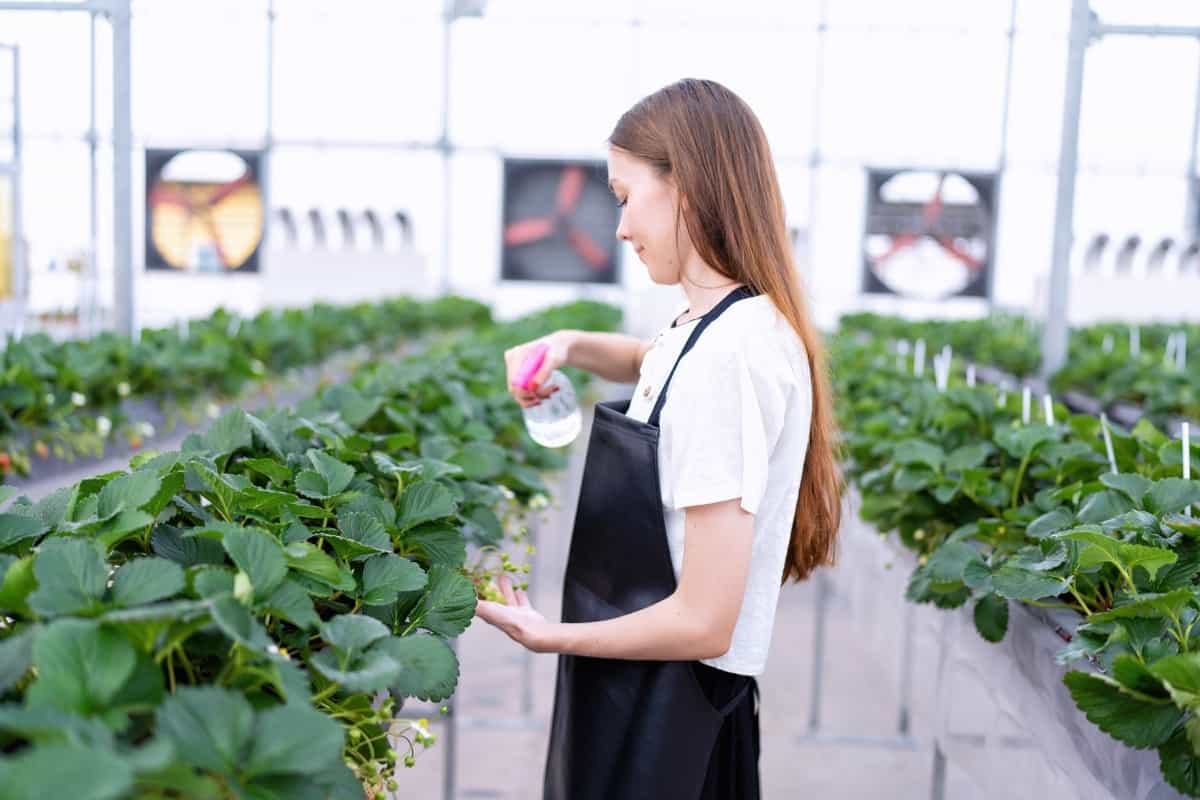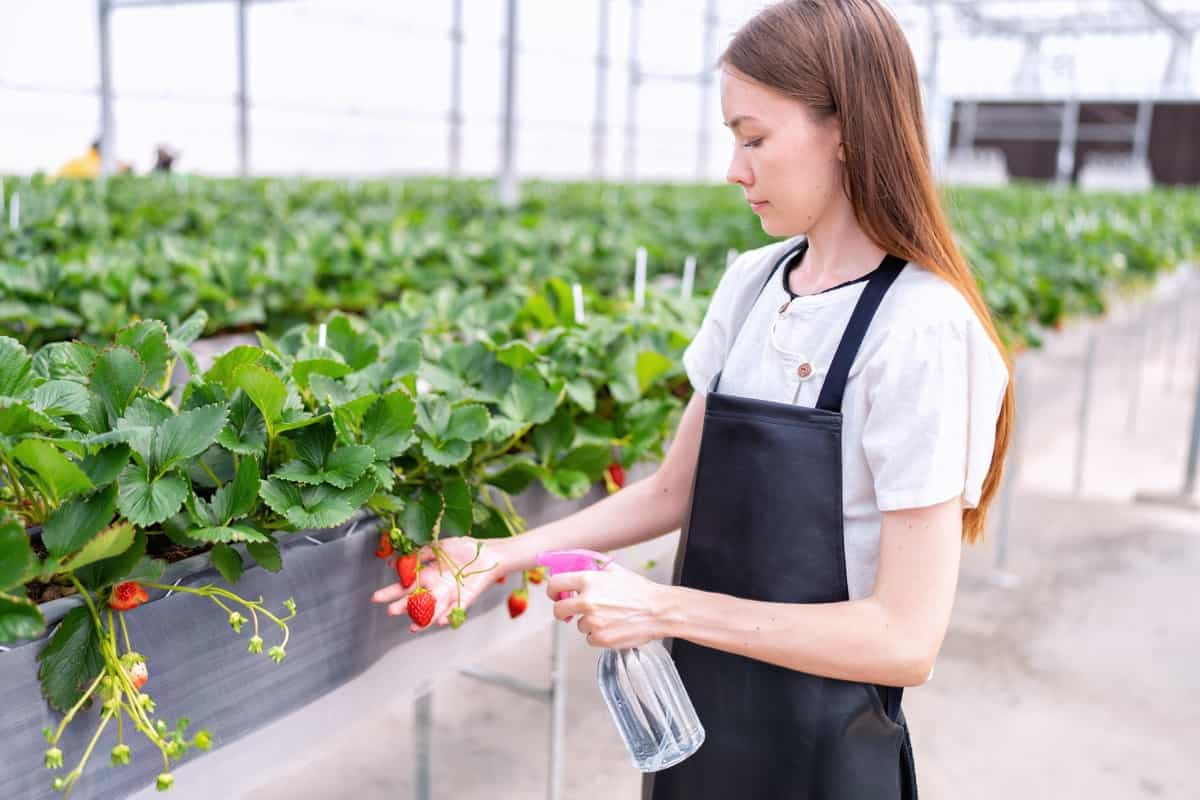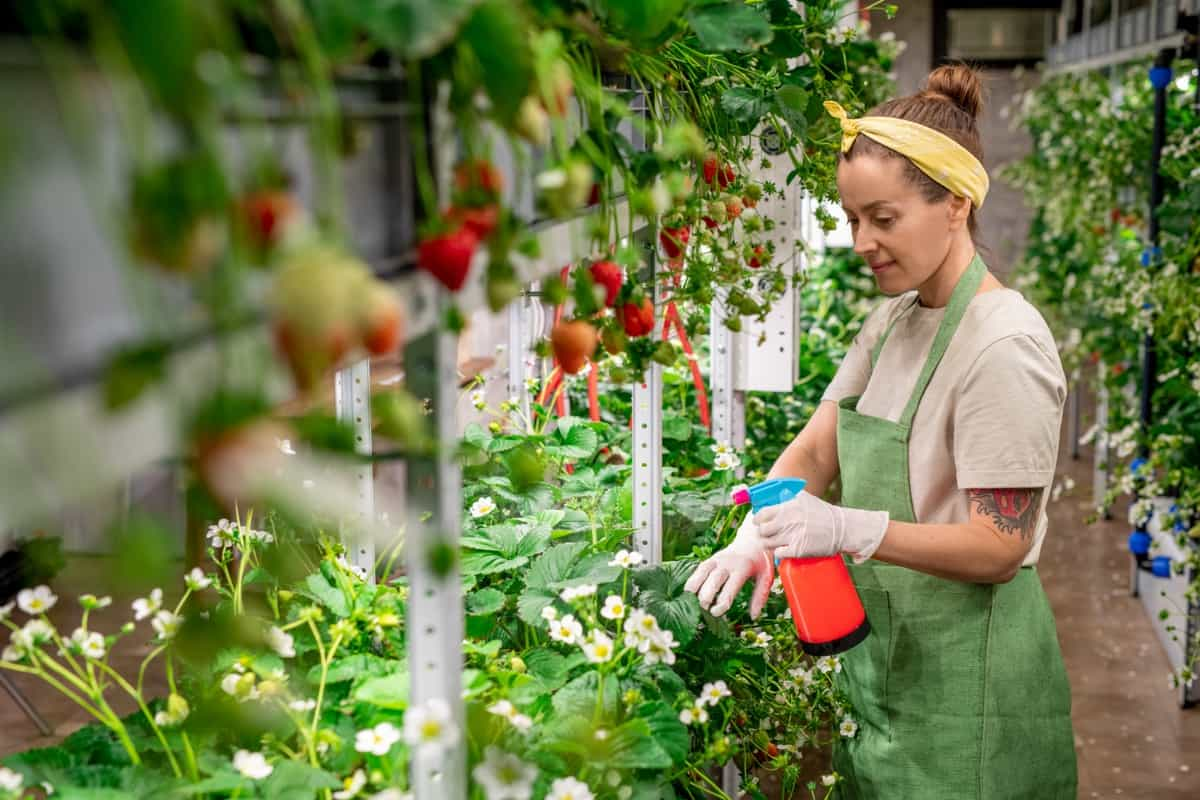Strawberries are one of the nutritious and delicious fruits that many of us love to grow in our gardens or enjoy fresh from the market. However, like all crops, strawberries can fall victim to various pests that can harm your plants and reduce your harvest. In this guide, we will explore natural and organic methods to control and get rid of common strawberry pests so you can enjoy healthy, pest-free strawberries without resorting to harmful chemicals.

How to Control Strawberry Pests Naturally: Natural and Organic Methods
Strawberry Pests: Identifying the Most Common Pests and Their Impact on Your Crop
- Strawberry Aphids: These tiny insects feed on sap, causing stunted growth, yellowing leaves, and distorted fruit. They can also transmit plant viruses.
- Spider Mites: These minuscule pests cause yellowing and stippling of leaves, leading to reduced photosynthesis and growth. Severe infestations can result in defoliation.
- Strawberry Bud Weevil: Adult weevils lay eggs in developing flower buds, causing them to distort or fail to open. Larvae feed inside the buds, leading to reduced fruit production.
- Slugs and Snails: These mollusks feed on ripe and unripe fruit, causing unsightly damage. They are most active during damp conditions.
- Strawberry Root Weevils (Otiorhynchus spp.): Larvae of these weevils feed on the roots, leading to poor nutrient uptake and wilting. Adults may also feed on leaves.
Using Neem Oil to Control Strawberry Pests: A Safe and Effective Method
Using neem oil to control strawberry pests is a safe and effective organic method that benefits your crop and the environment. Neem oil, derived from the neem tree’s seeds, contains natural compounds that act as a repellent, insecticide, and fungicide. Its action disrupts various pests’ feeding and reproductive abilities, including aphids, spider mites, and caterpillars, while preventing fungal diseases.
One of neem oil’s key advantages is its low toxicity to humans, beneficial insects, and wildlife. It poses minimal environmental risk and is suitable for use in organic farming. Dilute neem oil with water and mild soap as an emulsifier, then spray it onto your strawberry plants. Regular and timely applications, particularly during the growing season, can help control pest infestations and promote healthier strawberry plants.
The Role of Beneficial Insects in Controlling Strawberry Pests: Introduction of Predatory Insects
Introducing the beneficial insects into your strawberry fields can maintain a healthy ecosystem and promote sustainable pest management. Predatory insects like ladybugs, lacewings, and parasitic wasps are avid consumers of common strawberry pests such as aphids, spider mites, and caterpillars. They hunt, parasitize, or lay their eggs on these pests, effectively reducing their numbers and preventing infestations. These beneficial insects are efficient and environmentally friendly, specifically targeting pests while leaving other non-harmful insects unharmed.
In case you missed it: How to Control Container Garden Pests Naturally: How to Get Rid of Them with Natural and Organic Treatment

Companion Planting: How Planting Certain Plants Together Can Deter Strawberry Pests
- Marigolds: Marigolds are known for their strong scent, which deters many common strawberry pests like aphids and nematodes. Planting marigolds near your strawberry patch can help keep these pests away.
- Basil: Basil is another aromatic herb that can repel insects like aphids, thrips, and flies. Interplanting basil with strawberries can provide natural pest protection.
- Nasturtiums: Nasturtiums have a peppery scent that can deter aphids, whiteflies, and squash bugs. Their vibrant flowers can also attract beneficial insects like ladybugs and hoverflies.
- Chives: Chives emit a strong odor that repels aphids and other soft-bodied insects. Planting chives near strawberries can help protect them from these pests.
- Onions and Garlic: Both onions and garlic have natural insect-repelling properties. Planting them near your strawberry patch can deter a range of pests.
Crop Rotation: How Rotating Your Strawberry Crop Can Help Control Pests
Crop rotation is a sustainable practice that involves growing different crops in the same area over a multi-year cycle. It can effectively control pests and promote overall plant health when applied to strawberry cultivation. Crop rotation disrupts the life cycles of pests that target strawberries. By planting different crops, pests that specialize in strawberries are deprived of their preferred hosts, reducing their populations.
This natural break in their life cycle helps prevent the buildup of pest populations and the development of pesticide resistance. Moreover, crop rotation can enhance soil health. Different crops have varying nutrient needs and root structures, preventing the depletion of specific nutrients and reducing the risk of soilborne diseases. As a result, strawberries grown in rotated fields often have improved vigor and yield.
Using Diatomaceous Earth to Control Strawberry Pests: A Non-Toxic and Organic Method
Diatomaceous Earth (DE) is a non-toxic and organic method for controlling strawberry pests. DE is composed of finely ground fossilized diatoms with sharp microscopic edges that can pierce the exoskeletons of pests. When sprinkled around strawberry plants, DE creates a barrier that dehydrates and ultimately kills insects like slugs, snails, aphids, and caterpillars on contact.
Unlike chemical pesticides, DE is safe for humans, pets, and beneficial insects, making it an eco-friendly option. It should be reapplied after rain or irrigation since it loses effectiveness when wet. DE is an excellent choice for those looking to protect their strawberries from pests while maintaining an organic and non-toxic approach.
In case you missed it: How to Control Spinach Pests Naturally: How to Get Rid of Them with Natural and Organic Treatment

Traps and Barriers: How to Use Traps and Barriers to Control Strawberry Pests
- Sticky Traps: Hang yellow sticky traps near strawberry plants to catch flying pests like aphids, whiteflies, and thrips. These pests are attracted to the color and get stuck when they come into contact with the adhesive surface.
- Slug Traps: Place slug traps or beer traps around your strawberry patch to attract and trap slugs and snails, which can be significant strawberry pests.
- Row Covers: Use row covers made of lightweight fabric to physically block pests like birds, insects, and rodents from reaching your strawberry plants. Ensure proper ventilation and remove covers during pollination.
- Mulch: Applying mulch around strawberry plants can create a barrier that prevents soilborne pests and diseases from splashing onto the leaves and fruit.
Biological Control: How to Use Parasitic Wasps to Control Strawberry Pests
- Identification: Identify the specific pests you want to target, as different parasitic wasp species target different pests.
- Purchase and Release: Purchase parasitic wasp larvae or pupae from a reputable supplier. Release them in your strawberry patch during the appropriate season when the target pests are active.
- Monitoring: Regularly monitor your strawberry plants for signs of pest infestations and parasitic wasp activity.
- Habitat Enhancement: Create a hospitable environment by planting nectar-rich flowers near your strawberry patch to attract and sustain parasitic wasps.
- Reduce Chemical Use: Minimize chemical pesticides, as they can harm beneficial insects like parasitic wasps.
Integrated Pest Management (IPM): A Holistic Approach to Controlling Strawberry Pests
Integrated Pest Management (IPM) is a comprehensive and sustainable approach to managing strawberry pests. It combines various strategies to minimize pest damage while reducing chemical pesticides’ environmental and health impacts. In IPM,
- Monitoring: Regularly inspect plants for pest presence.
- Prevention: Employ cultural practices like crop rotation and companion planting.
- Biological Control: Introduce beneficial insects.
- Mechanical Control: Use traps, barriers, and other physical methods.
- Chemical Control: Employ pesticides sparingly and selectively.
- Education: Stay informed about pest life cycles and behavior.
IPM first strives for the least harmful methods to maintain a balanced ecosystem, ensuring healthier strawberries and reduced pesticide reliance.
Table for Strawberry Pest Control with Natural and Organic Treatment
| Pest | Natural/Organic Treatment | How to Apply |
| Aphids | Neem oil, ladybugs, lacewings | Spray neem oil on affected plantsIntroduce beneficial insects. |
| Spider Mites | Neem oil, predatory mites | Spray neem oil on plantsRelease predatory mites. |
| Strawberry Weevils | Handpicking, diatomaceous earth | Handpick adult weevilsSprinkle diatomaceous earth around plants. |
| Slugs and Snails | Slug traps, copper barriers | Place slug traps with beerInstall copper barriers around beds. |
| Caterpillars | Bacillus thuringiensis (Bt), row covers | Apply Bt sprayUse row covers to protect plants physically. |
| Nematodes | Beneficial nematodes, marigolds | Apply beneficial nematodes to soilPlant marigolds as a companion. |
| Birds | Netting, scarecrows | Cover plants with bird nettingUse scarecrows or reflective materials. |
In case you missed it: How to Control Daffodil Pests Naturally: How to Get Rid of Them with Natural and Organic Treatment

Conclusion
By adopting eco-friendly strategies and understanding the biology and behavior of common strawberry pests, you can strike a balance between bountiful harvests and sustainable gardening practices.
- Beneficial Insects in Pest Management
- Natural Solutions for Pest Control in Flower Gardens
- Types of Fungicides Used in Agriculture
- Common Issues in the Fruit Development Stage of Pomegranate Farming
- Fruit Development Issues in Papaya: Easy Solutions and Treatment
- Soil-Borne Diseases and How to Protect Your Plants
- Practices to Prevent Disease Spread in the Garden
- From Wilted to Thriving: How to Treat Root Rot Naturally in Houseplants
- Natural Remedies to Cure Brown Spots on Fig Tree Leaves